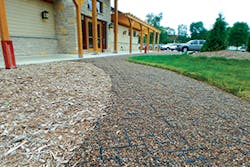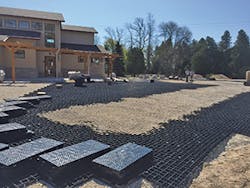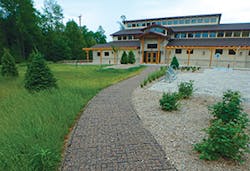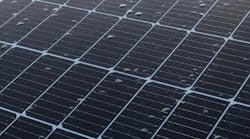Project Profile: Aggregate Paver System Protects Lake Michigan Watershed
The Ridges Sanctuary, located on Lake Michigan in Bailey’s Harbor, WI, on Door County’s eastern shore, is the oldest nature preserve in Wisconsin. Botanist Albert Fuller of the Milwaukee Public Museum purchased the initial 40 acres for the preserve in 1937 when he learned that a trailer park was planned for the ecologically fragile area. The location is significant because each of the 30 ridges and swales located on the property represents a former Lake Michigan shoreline, with the oldest dating back 1,200 years. Because of the uniqueness of the location, several endangered and threatened species make The Ridges their home.
Naturalist Roy Lukes spearheaded the addition of public education and access to the sanctuary in the mid-1960s. It was through this public education and access that The Ridges gained fans and donations, finally leading to a $3.5 million project in 2015 that included restoration of the natural habitat, the creation of a hiking trail that leads to a boardwalk on the now-1,400-acre sanctuary, and the construction of the new Cook-Fuller visitor center.
The visitor center is the first building in Door County to obtain Leadership in Energy and Environmental Design (LEED) certification from the US Green Building Council. The building was awarded the prestigious Gold certification in January 2017. Significant components include the use of high-performance and low-energy materials such as insulation, lighting, heating and cooling, water use, porous pavements, and a multitude of recycled materials.
According to Judy Drew, past assistant director for The Ridges, “Land preservation, stewardship, and management are at the forefront of our mission, so making design choices that encourage conservation was of paramount importance. In addition to providing an excellent facility for members and visitors, our 7,400-square-foot center will be the first LEED-certified commercial building in Door County. As such, it will demonstrate the benefits of environmentally conscious design and model ways for local homeowners and businesses to implement practical sustainable features.”
In The Ridges’ quest for LEED certification, aggregate porous pavements were incorporated in the design to reduce impacts of stormwater runoff into adjacent Lake Michigan. The Geopave porous pavement system, used for 11,000 square feet of parking, walkways, and trails, met that goal and contributed to the LEED credits in several categories:
- 4.2, Recycled Content Post-Consumer (20%)
- 5.1, Site Development: Protect and Restore Habitat
- 5.2, Regional Materials: 20% Extracted, Processed, and Manufactured Regionally (500 miles)
- 6.1, Stormwater Quantity Control
- 6.2, Stormwater Quality Control
- 7.1, Heat Island Effect: Non-Roof
The Geopave system, manufactured by Presto Geosystems in Appleton, WI, just 100 miles from the project location, is a semi-rigid permeable pavement system made of recycled polyethylene. Suitable for everyday vehicle traffic, the paver system is designed to confine highly permeable, open-graded aggregate, allowing for maximum water infiltration. The 2-inch-deep paver system is placed over 0 to 6 inches of 3/8- to 1-inch clean, crushed rock. The base depth is dependent on the subgrade strength and maximum design loads, with the system able to accommodate up to H-20 loading. Occasionally, a deeper base may be required to maximize stormwater storage, especially over relatively impermeable subgrades.
Unlike hard-surface pavements that shed water from the surface, the Geopave system, with its highly permeable infill and base, accepts water, significantly reducing runoff and allowing for natural percolation to recharge aquifers. At The Ridges, a crushed limestone infill was used for the parking area and a contrasting-colored buckshot crushed aggregate in the walkways, both of which were sourced locally. The different aggregates allowed for delineation between the walkways and parking areas and provided an aesthetically pleasing solution. The permeable nature of the GeoPave open-grid pavement system (at least 50% pervious) and light color of the infill helped qualify for the heat-island effect LEED credits by creating a cooler pavement than is typical with asphalt.
Increases in green initiatives and compliance with stormwater regulations are driving the demand for pavements that allow natural rainwater infiltration and reduce stormwater runoff. Permeability can be obtained through systems that are vegetated, aggregate-filled, or porous hard-surfaced. Aggregate-filled systems offer economical solutions for pavements while addressing these stormwater issues.
“We are extremely pleased with the level of interest visitors have expressed in the Geopave product and delighted we’ve had the opportunity to talk with them about this very practical way of making a personal investment in the environment,” adds Drew.




